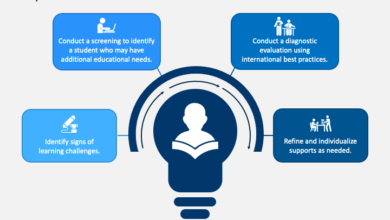Up Skilling and Re Skilling Strategies

Introduction
In today’s rapidly evolving world, the demand for new capabilities is accelerating, posing both challenges and opportunities for organizations worldwide. As technological advancements and digital transformation continue to reshape industries, it is estimated that up to 85 million jobs could be lost by 2025 due to the changing division of labor between machines and humans. However, this shift is also expected to create around 97 million new jobs. To stay competitive and adapt to this changing landscape, organizations need to focus on upskilling and reskilling their workforce. This article explores various strategies and approaches to empower businesses to develop the skills needed to thrive in the future.
Understanding Upskilling and Reskilling
Before delving into the strategies, it’s essential to clarify the difference between upskilling and reskilling. Upskilling refers to the process of learning new skills or enhancing existing ones to keep pace with evolving job requirements. It involves providing training and development opportunities to employees, enabling them to expand their knowledge and capabilities within their current roles.
On the other hand, reskilling involves acquiring new skills to transition into a different job or career path. It allows individuals to adapt and remain employable in an ever-changing professional landscape. By equipping employees with the necessary skills for emerging roles, organizations can effectively address persistent skills shortages and future-proof their workforce.
The Need for Upskilling and Reskilling
According to the World Economic Forum, approximately 40% of workers can expect significant changes in their base skill requirements. This highlights the urgent need for upskilling and reskilling across all industries and sectors. With major disruptions projected to occur by 2025, organizations must proactively invest in these strategies to prepare their workforce for the future.
Remanufacturing: Leveraging Adjacent Skills
Remanufacturing, or leveraging adjacent skills, is an effective approach to help employees transition into new roles. It involves identifying individuals with skills closely aligned with the ones required in emerging job domains. By providing lateral learning experiences and targeted training, organizations can facilitate the reskilling process for their workforce. The World Economic Forum estimates that around 50% of all workers will need to be retrained by 2025 due to technological advancements, making remanufacturing a crucial strategy for staying competitive.
Skills Cultivation: Filling the Talent Gap
Skills cultivation focuses on teaching employees advanced skills to address talent gaps within the organization. It encompasses ongoing training initiatives and career development programs that empower employees to acquire new competencies and progress within their chosen career paths. Organizations can tap into the knowledge and experience of long-term employees, leveraging their understanding of the company’s culture and customers. By investing in skills cultivation, businesses can bridge the talent gap and nurture a workforce equipped with the necessary expertise to tackle future challenges.
Overcoming Barriers to Workforce Development
While two-thirds of organizations recognize the importance of workforce development programs, many are slow to take action due to financial constraints and a lack of suitable technology infrastructure. However, the failure to invest in upskilling and reskilling initiatives poses risks to an organization’s long-term goals and competitive advantage. To overcome these barriers, companies must prioritize and allocate sufficient resources to foster a culture of continuous learning and skill development.
Creating Effective Career Paths
Developing effective career paths is vital for aligning employees’ aspirations with the organization’s business objectives. A competency-based approach can help assess the specific skills required for each role and identify the necessary skill development opportunities. By offering clear career progression routes, organizations can enable employees to navigate their professional journeys, whether through lateral moves or promotions.
The Role of Career Coaching
Career coaching plays a pivotal role in helping employees assess their skills and unlock their hidden potential. It enables individuals to gain a detailed understanding of their capabilities and provides insights that organizations may not have previously recognized. By investing in career coaching, businesses can not only optimize employee performance but also enhance motivation and retention. Moreover, effective career coaching serves as a differentiator in attracting top talent, as professionals seek employers who prioritize their long-term career growth and development.
Cultivating a Culture of Talent Mobility
To attract and retain talent, organizations must foster a culture of talent mobility. By demonstrating a commitment to their employees’ future careers, businesses not only enhance their appeal but also create opportunities for internal growth and advancement. Talent mobility facilitates both horizontal and vertical movement within the company, emphasizing the organization’s investment in its workforce and their long-term success. As the pace of digital transformation continues, talent mobility becomes increasingly critical in keeping up with the dynamic skills market.
Conclusion
In conclusion, upskilling and reskilling strategies are essential for organizations to adapt and thrive in an ever-evolving business landscape. By investing in training and development initiatives, businesses can equip their workforce with the necessary skills to stay competitive. Remanufacturing and skills cultivation offer practical approaches to address skills shortages and bridge talent gaps. Additionally, creating effective career paths, leveraging career coaching, and nurturing a culture of talent mobility are vital components of a comprehensive upskilling and reskilling strategy. By embracing these strategies, organizations can position themselves at the forefront of innovation, attract top talent, and secure their long-term success.












